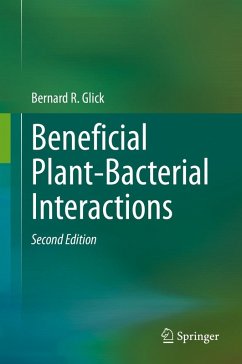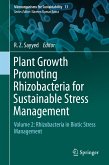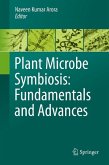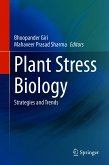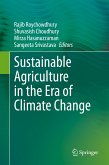This book provides a straightforward and easy-to-understand overview of beneficial plant-bacterial interactions. It features a wealth of unique illustrations to clarify the text, and each chapter includes study questions that highlight the important points, as well as references to key experiments.
Since the publication of the first edition of Beneficial Plant-Bacterial Interactions, in 2015, there has been an abundance of new discoveries in this area, and in recent years, scientists around the globe have begun to develop a relatively detailed understanding of many of the mechanisms used by bacteria that facilitate plant growth and development. This knowledge is gradually becoming an integral component of modern agricultural practice, with more and more plant growth-promoting bacterial strains being commercialized and used successfully in countries throughout the world. In addition, as the world's population continues to grow, the pressure for increased food production will intensify, while at the same time, environmental concerns, mean that environmentally friendly methods of food production will need to replace many traditional agricultural practices such as the use of potentially dangerous chemicals. The book, intended for students, explores the fundamentals of this new paradigm in agriculture, horticulture, and environmental cleanup.
Since the publication of the first edition of Beneficial Plant-Bacterial Interactions, in 2015, there has been an abundance of new discoveries in this area, and in recent years, scientists around the globe have begun to develop a relatively detailed understanding of many of the mechanisms used by bacteria that facilitate plant growth and development. This knowledge is gradually becoming an integral component of modern agricultural practice, with more and more plant growth-promoting bacterial strains being commercialized and used successfully in countries throughout the world. In addition, as the world's population continues to grow, the pressure for increased food production will intensify, while at the same time, environmental concerns, mean that environmentally friendly methods of food production will need to replace many traditional agricultural practices such as the use of potentially dangerous chemicals. The book, intended for students, explores the fundamentals of this new paradigm in agriculture, horticulture, and environmental cleanup.
Dieser Download kann aus rechtlichen Gründen nur mit Rechnungsadresse in A, B, BG, CY, CZ, D, DK, EW, E, FIN, F, GR, HR, H, IRL, I, LT, L, LR, M, NL, PL, P, R, S, SLO, SK ausgeliefert werden.
"The reviewed book focuses on interaction between plant and bacteria. ... This book is really needful for soil microbiologist, agronomist, soil scientist and policy planner to develop environmentally friendly, socially acceptable and economically viable technology for enhancing sustainable agriculture. ... The audience can easily understand about plant-bacteria interaction and their role in promoting cleaner production of agriculture. This book should be useful to anyone who is interested in developing a relatively broad fundamental perspective on plant-bacteria interactions." (Jay Prakash Verma, Durgesh Kumar Jaiswal, Janardan Yadav and H. B. Singh, Journal of Cleaner Production, Vol. 129, 2016)
"An Excellent, broad, and comprehensive introduction to the multitude of bacteria that promote plant growth, and the mechanisms involved. ... Questions for review and discussion are included at the end of each chapter, and extensive lists of up-to-date sources for further readings are provided, which an instructor could easily use to expand the scope of the material covered. Summing Up: Recommended. Upper-division undergraduates, graduate students, faculty/researchers, and professionals/practitioners." (W. Loescher, Choice, Vol. 53 (1), September, 2015)
"An Excellent, broad, and comprehensive introduction to the multitude of bacteria that promote plant growth, and the mechanisms involved. ... Questions for review and discussion are included at the end of each chapter, and extensive lists of up-to-date sources for further readings are provided, which an instructor could easily use to expand the scope of the material covered. Summing Up: Recommended. Upper-division undergraduates, graduate students, faculty/researchers, and professionals/practitioners." (W. Loescher, Choice, Vol. 53 (1), September, 2015)

